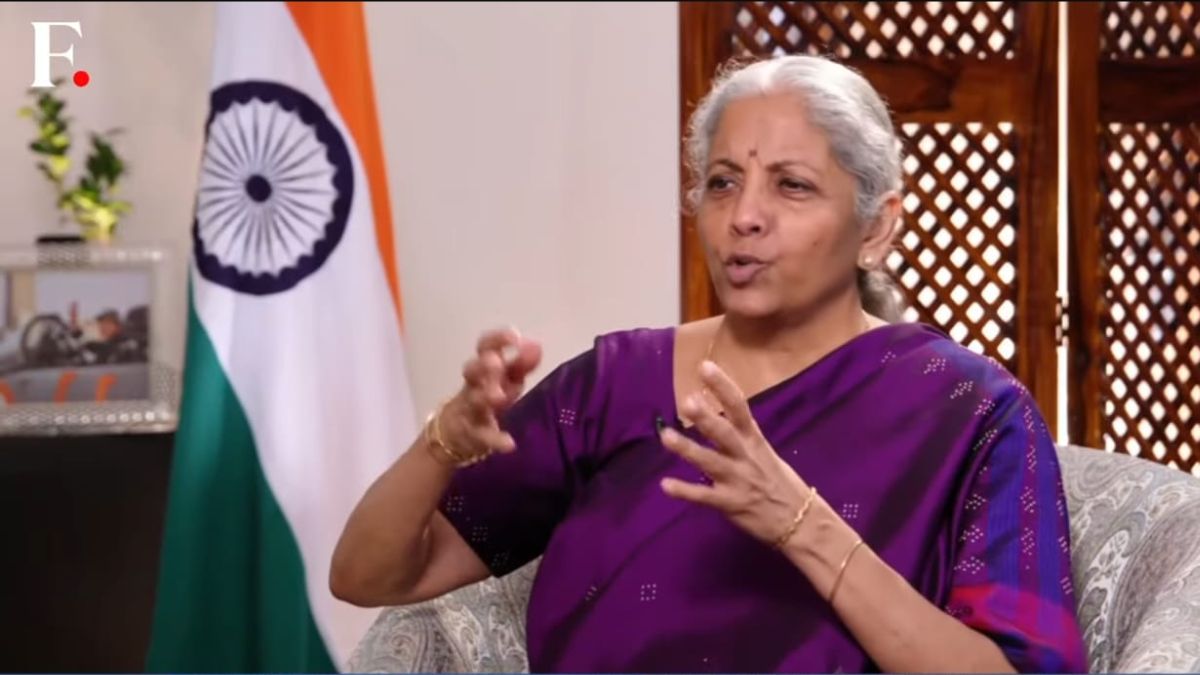Finance Minister Nirmala Sitharaman stressed that the rupee remains stable against most global currencies, noting that its recent movements against the dollar reflect international trends rather than a sign of underlying weakness
Speaking to CNN-News18 Editor-in-Chief Rahul Joshi on Friday, Finance Minister Nirmala Sitharaman sought to put the rupee’s weakness in perspective. She emphasised that the Indian currency is “not weakening” but rather “only volatile against the dollar,” a trend that several countries are facing due to the greenback’s strength. Against other major currencies, she noted, the rupee has not shown the same level of depreciation.
Rupee hits record low
Her comments came on a day when the Indian rupee touched a new all-time low of Rs88.36 per US dollar. The fall was largely driven by concerns over higher American tariffs on Indian exports and persistent foreign portfolio outflows. To contain the decline, the Reserve Bank of India intervened by selling dollars near the Rs88.30 level, which helped cap further losses.
Expected trading range
Despite this sharp fall, analysts believe the rupee will remain in a narrow range in the near term, between Rs88.10 and Rs88.14 per dollar. This expectation is supported by regional currency strength and optimism that the US Federal Reserve may move toward rate cuts, which could reduce pressure on emerging-market currencies like the rupee.
Volatility measures
Market data reflects a mixed picture of volatility. The NYU V-Lab GARCH model placed the USD/INR volatility forecast at 3.41 per cent on September 5, down slightly from 3.57 per cent earlier. Technical readings show an Average True Range of about 0.41 per cent, pointing to moderate daily fluctuations, while historic volatility levels have ranged between 3.45 and 5 per cent depending on the timeframe. Longer-term measures from the Foreign Exchange Dealers’ Association of India also show some easing, with ten-year average volatility falling to 10.98 per cent in August 2025 from over 12 per cent earlier this year.
Trade impact
The weakening rupee presents a mixed bag for businesses. Exporters in sectors such as IT, textiles and pharmaceuticals may benefit from improved competitiveness abroad. However, import-heavy industries, especially oil refiners, electronics manufacturers and healthcare companies, are facing rising costs. This dynamic could push inflation higher while also squeezing corporate margins.
Drivers of volatility
The rupee’s swings are being shaped by both domestic and external pressures. New US tariffs, in some cases as high as 50 per cent, have unsettled markets. Foreign investors have pulled more than $1.4 billion from Indian equities in September alone, adding to the currency’s weakness. RBI interventions have played a stabilising role, while expectations of US monetary easing have kept losses from deepening further.
Outlook
Going forward, the rupee’s trajectory will hinge on trade negotiations, global capital flows and the Federal Reserve’s policy stance. If Fed rate cuts materialise and investment inflows stabilise, the rupee may find near-term support. Without these tailwinds, however, analysts caution that the currency could weaken further, possibly testing the Rs89 per dollar mark by early 2026.
End of Article

)

